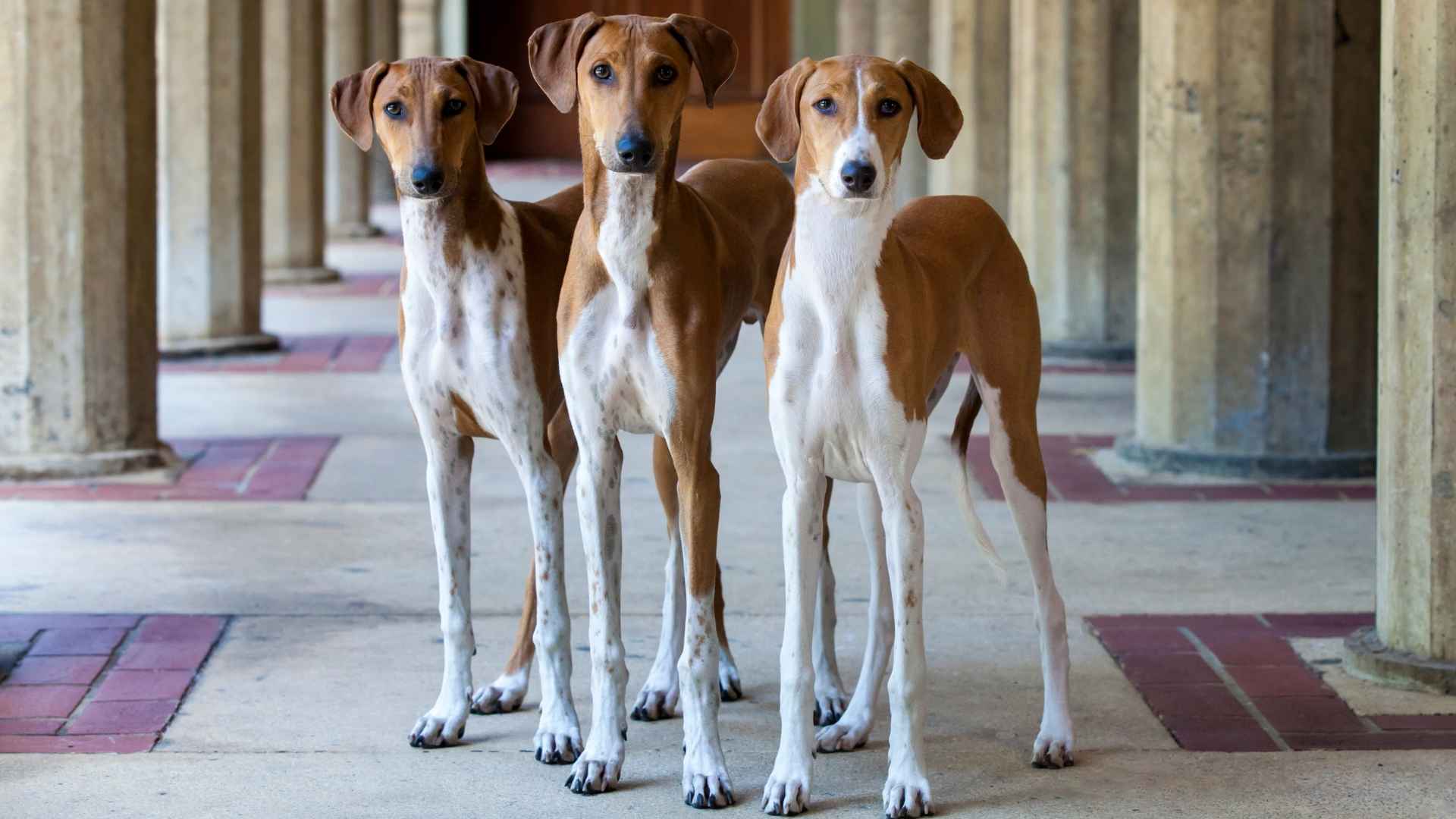Some dogs are so rare, it’s like searching for buried treasure to find them. These unique pups aren’t the kind you’ll spot at your neighborhood park or local shelter — they’re the hidden gems of the dog world, with features and histories that will leave you amazed. From unusual looks to ancient origins, these breeds stand out for their distinct charm and mysterious appeal.
Whether they come from remote islands, rugged mountain regions, or have roots that go back to ancient civilizations, these dogs remind us that the canine family is full of surprises. Some are known for their striking appearance, others for their fascinating backstories — but what they all have in common is how hard they are to find.
So, if you’ve ever wondered about the rarest dogs on the planet, get ready. We’re about to explore a side of the dog world that few people ever get to see — where each pup is a living piece of history and a true one-of-a-kind companion.
Most Rarest Dog Breeds
1. Otterhound
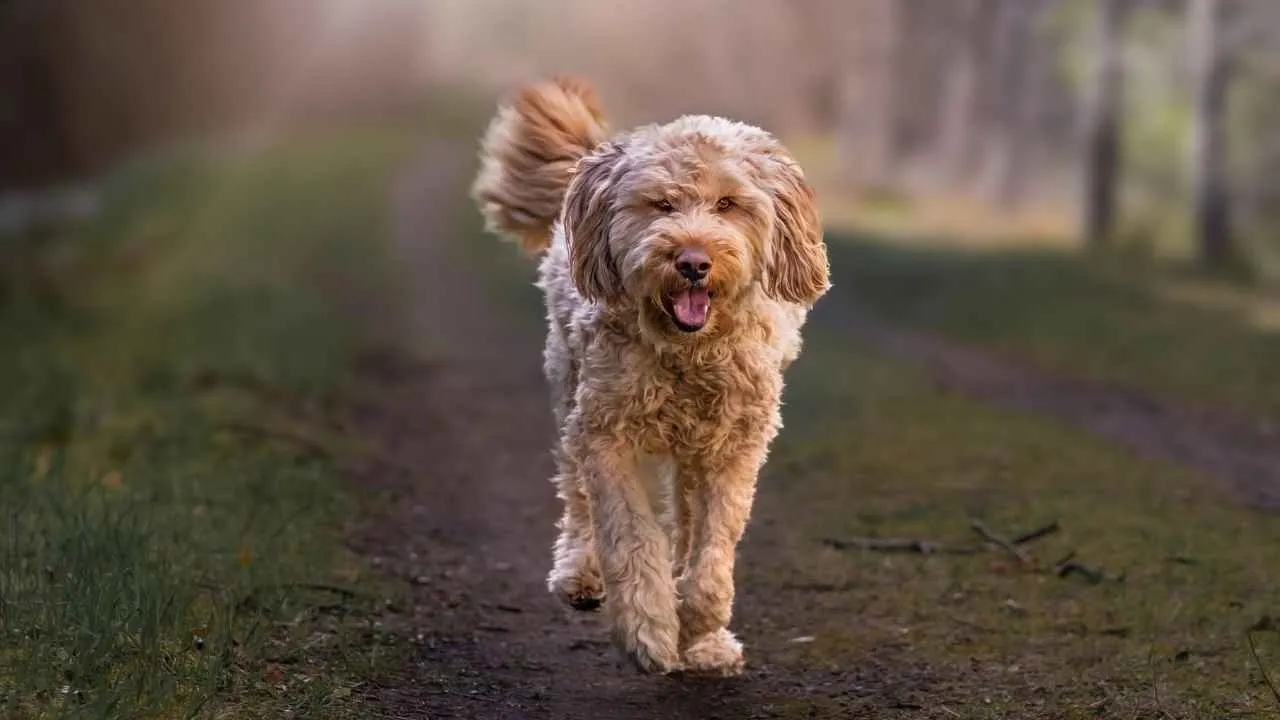
Height: Standing at a height of 23 to 27 inches
Weight: Average weight is 65 to 115 pounds
The Otterhound is a large, rough-coated scent hound that originated in England, dating back as far as the 1100s. With its thick, waterproof double coat and distinctive webbed feet, this breed was originally developed for otter hunting, as its name suggests.
Affectionate and sociable, the Otterhound makes a wonderful family companion. These dogs thrive on being part of a group, whether that’s joining in on family activities, swimming, or heading out on adventure hikes.
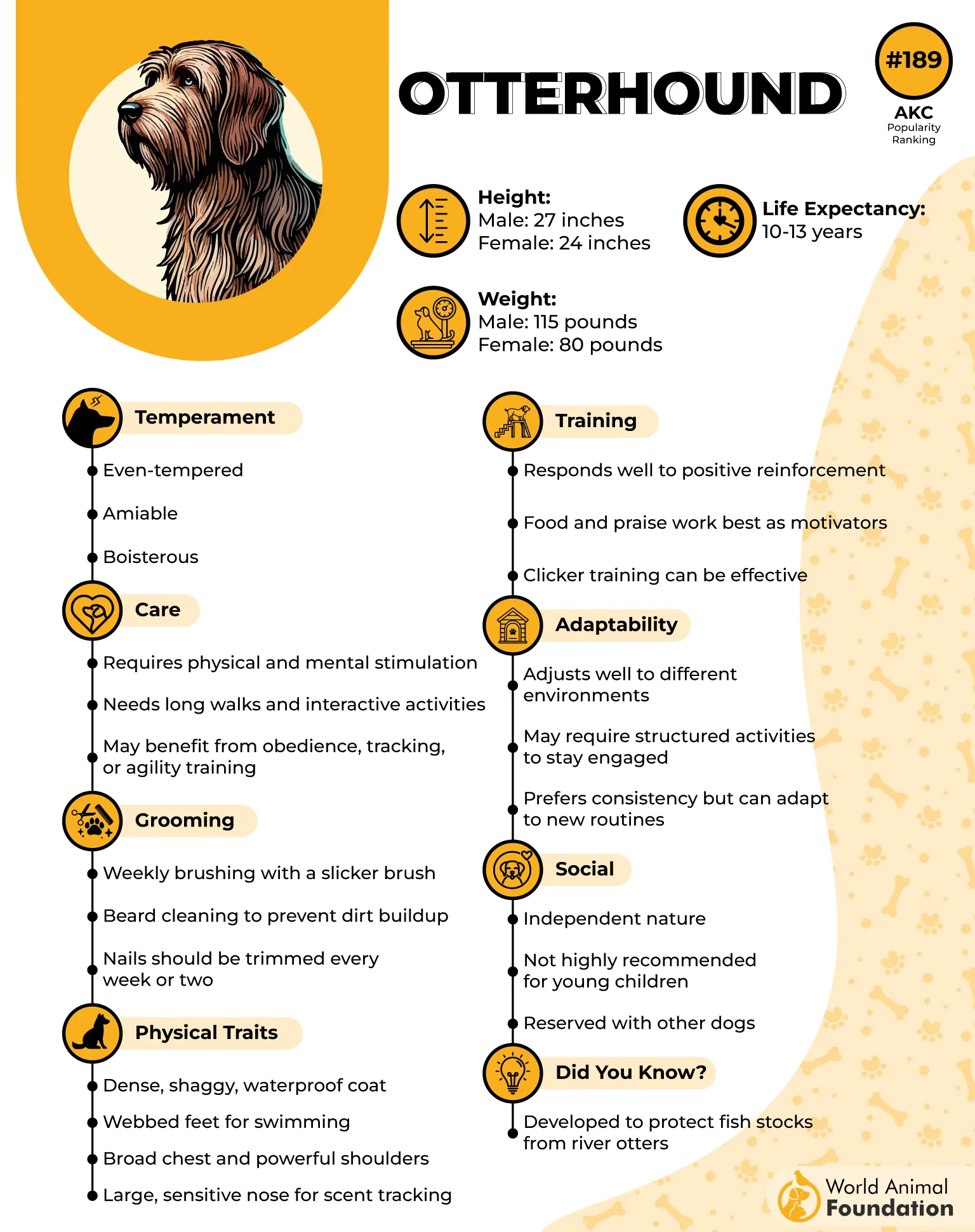
Despite their playful and friendly nature, Otterhounds are among the world’s rarest dog breeds today. Recognized as a vulnerable native breed, fewer than 600 of these remarkable dogs are believed to exist worldwide.
Known for their calm, loyal temperament, Otterhounds also have an extraordinary sense of smell, making them excellent trackers and hunters. While they may not sniff out kibble from a mile away, their powerful noses are impressive! To keep these energetic and intelligent dogs happy and healthy, they need regular exercise, early training, and consistent grooming to care for their shaggy coats.
2. Azawakh
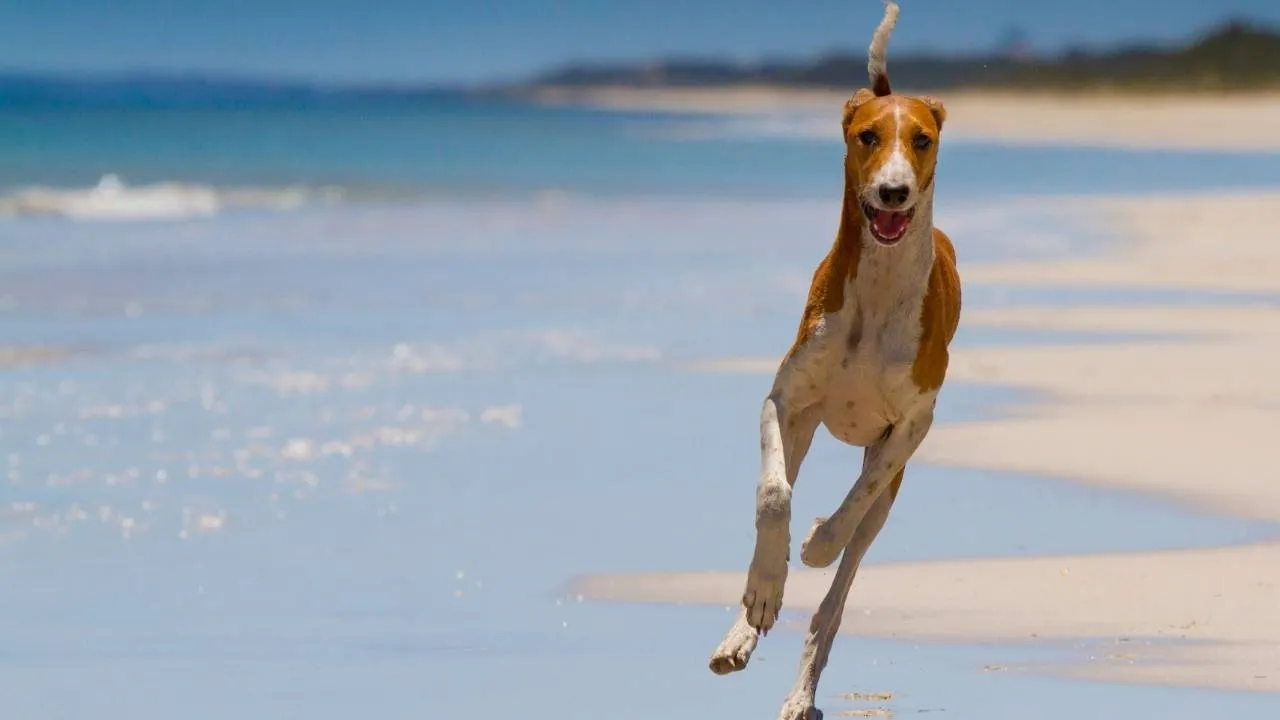
Height: Standing at a height of 23.5 to 29 inches
Weight: Average weight is 44 to 55 pounds
Did you know what Azawakh means? The world translates to the land of the north. These pooches are originally guardians, hunters, and companions of the Tuareg people and the other ethnic tribes of the southern Sahel. Interestingly, these pooches are more closely related to the sloughi rather than the Saluki.
Purina UK says the Azawakh is a West African sighthound that has been hunting gazelle over the blistering sand of the Sahara for over a thousand years. This pup originated in Burkina Faso, Mali and Niger and has slender and elegant appearance, combined with a sturdy strength that helps this pup endure in extreme hot temperatures of the Sahelian zone of Africa.
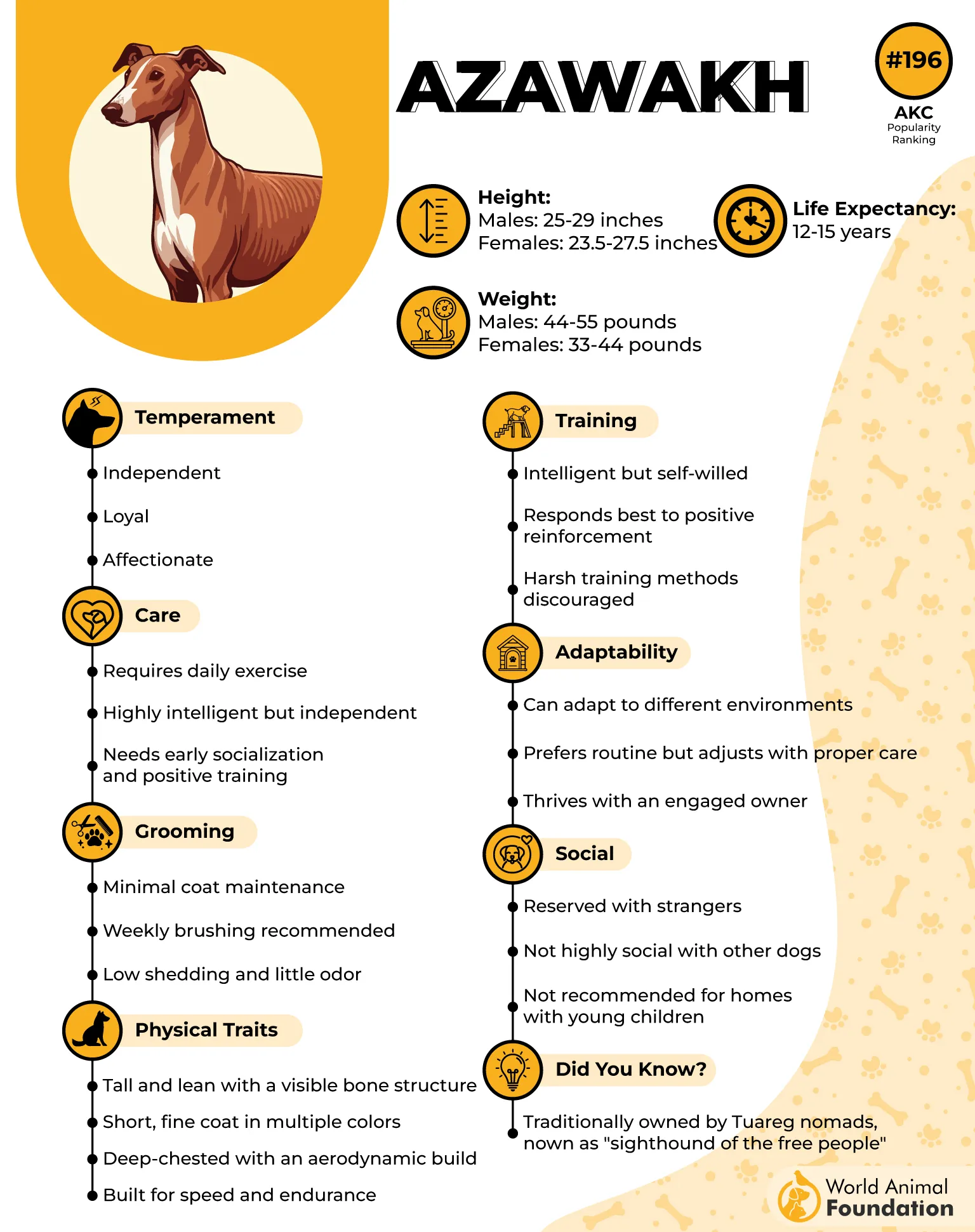
The Azawakh excels in lure coursing and agility competitions because this beautiful is not only hardy but also quite fast because of its beautiful, long legs.
These pups have a sleek, short coat that sheds minimally and doesn’t require much grooming, but these agile heroes have a strong prey drive due to which makes them less ideal for homes with small pets.
3. Mudi
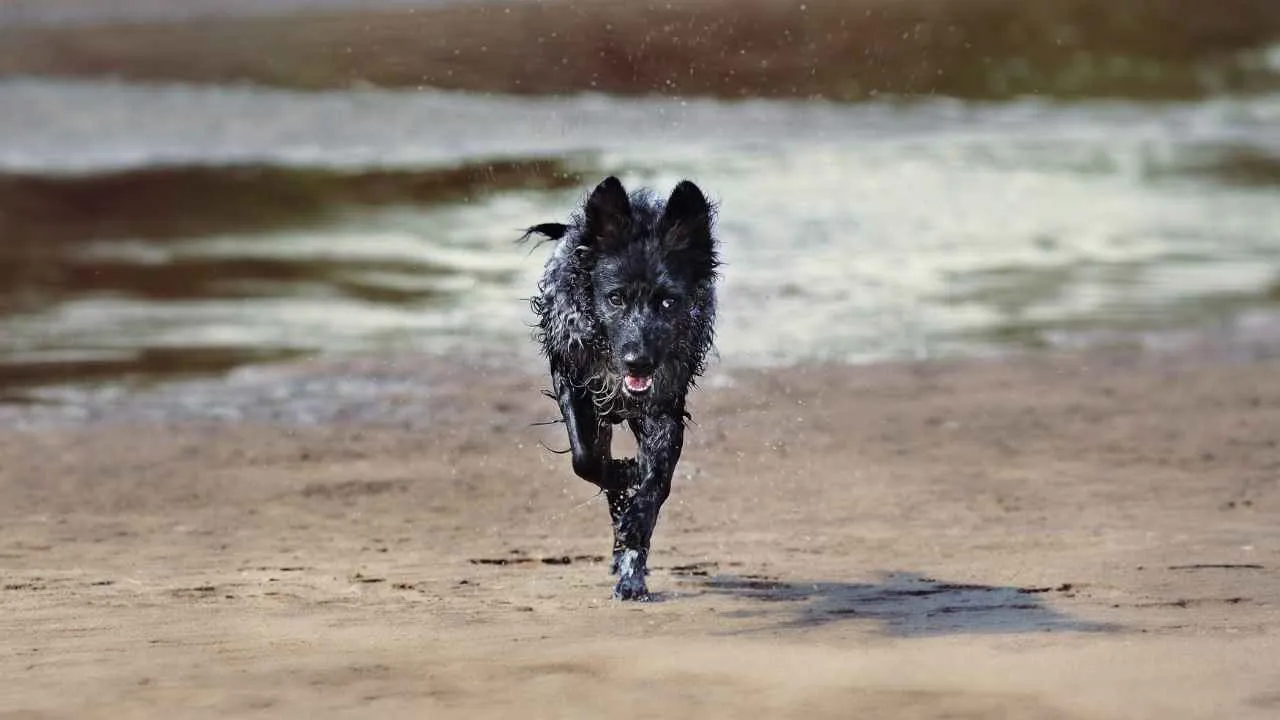
Height: Standing at a height of 14 to 18 inches
Weight: Average weight is 18 to 29 pounds
These completely black pups belong to the spitz dog breeds but are tinnier than the common spitz dogs like the Siberian husky, Akita, and the Alaskan Malamute. A depressing statistic says it is estimated that there are no more than a few thousand Mudis left worldwide, making these pooches incredibly precious and rare.
According to the American Kennel Club (AKC), the Mudi is an incredibly versatile, agile, intelligent, and alert Hungarian farm dog that can hunt, kill rodents, and herd and guard livestock easily. These pooches are courageous and confident and can handle even the most stubborn cattle and livestock.
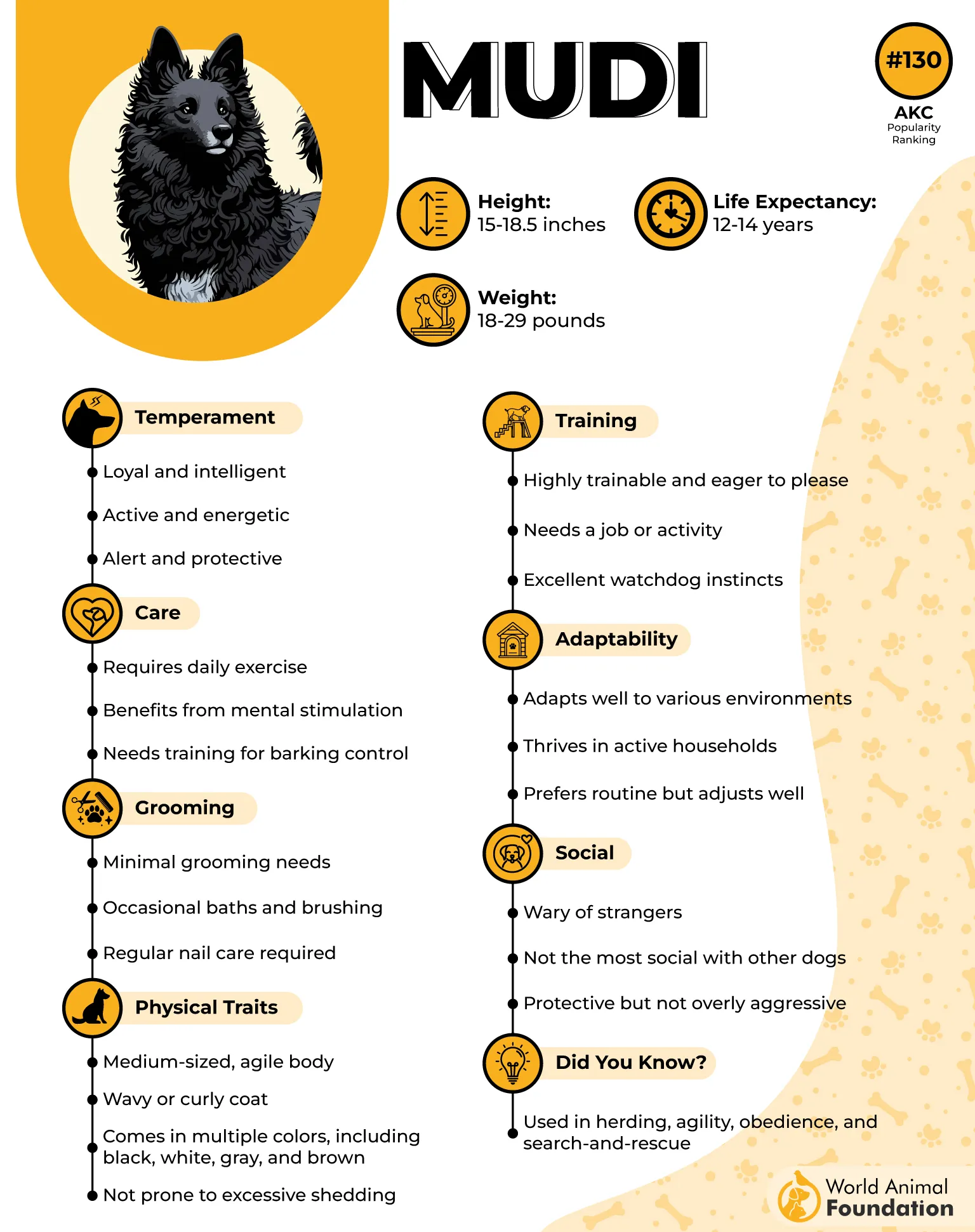
This energetic pup fits well in active households and is easy to manage and take care of if their regular exercise and training goals are met. It is advised to introduce these dogs to people and other dogs and small pets from a young age to make them more social and adjusting.

Moreover, these pups aren’t ideal for beginners but more experienced owners because of their high energy levels and heavy exercise needs, which they need for growing up to be a well-mannered dog breed.
Mudi’s don’t shed a lot, they have a manageable, dense coat, and don’t need extensive grooming or brushing. Moderate care and occasional showers will keep them smelling fresh and happy.
4. Norwegian Lundehund
Height: Standing at a height of 12 to 15 inches
Weight: Average weight is 15 to 30 pounds
The Norwegian Lunde Hund is also a spitz-type of dog breed which hails from the harsh landscapes of Scandinavia. This rare and unique small dog is a hardy, friendly, and athletically gifted pup that is lean and lithe but not particularly racy.
PetMD says these pooches aren’t the most expressive and affectionate dogs, but love playing and spending time doing activities with their owners. They make excellent hiking companions and would love to go on a trek because of their high energy levels and active personalities.
These pooches have a short double coat that doesn’t require frequent grooming; weekly brushing and basic care will suffice.
Interestingly enough, the Norwegian Lundehund has six toes on each foot. This small to medium-sized unique pup was originally bred to hunt puffins on steep cliffs in Norway.
These pooches are known to be incredibly flexible and can wiggle their way out of tight spaces easily. Norwegian lundehunds can also close their ears to prevent dirt or water from reaching their ear canals.
5. Chinook
Height: Standing at a height of 21 to 27 inches
Weight: Average weight is 45 to 90 pounds
The Chinook is a lesser-known breed that is quite uncommon to see and hear about. But these pooches have an incredibly interesting and intriguing history. The first-ever chinook accompanied an Antarctic expedition in the 1920s.
Omlet states this pooch was bred by a visionary explorer in 1917 who wanted a furry companion that had speed, strength, endurance, and a friendly and gentle temperament. He is known to have bred his husky with a mastiff to produce a Chinook.
Nowadays, this rare dog breed is not only a proud member of the working group but also the best sledding dog in the world. This balanced muscular breed has a tawny colored coat that ranges from red to silver and fawn.
These pooches suit well in a northern climate. Chinook originated in the USA and is the state dog of New Hampshire, from where Arthur Treadwell Walden, the breed’s developer, hails.
6. Thai Ridgeback
Height: Standing at a height of 22 to 24 inches
Weight: Average weight is 35 to 55 pounds
A muscular body, wedge-shaped head, and a ridge of hair running along its spine and growing in the opposite direction are the most defining features of the Thai ridgeback, except for its loyal nature, which makes it an excellent companion and house pet. The Thai ridgeback has a very short, smooth coat and triangular pricked ears, which give this pup a distinctive look.
The ridgebacks are an ancient dog breed that dates back to the 17th century and was first seen in Eastern Thailand. These striking and low-shedding dogs have natural guarding instincts and were used for hunting and protection. These pooches are smart and highly trainable dogs that pick up cues quite instantly and are known to be obedient and protective of their humans.
They can get aggressive with other dogs; hence should be socialized and trained from a young age. They live up to 12-13 years and are incredibly clean and low-maintenance dogs that are a joy to raise and own. Many rare dog breeds have grooming needs that require regular attention, but this pooch doesn’t need grooming frequently at all.
7. Canaan Dog
Height: Standing at a height of 20 to 24 inches
Weight: Average weight is 40 to 55 pounds
This medium-sized dog originated in the Naqab desert region and the area of Haifa in modern-day Palestine (occupied region since 1948 by Israel) and was originally bred for herding and guarding livestock, and is still known for being a guardian of the flock and home.
Britannica describes these sturdy pooches as being developed by the semiwild pariah dogs that were the descendants of animals present in the region since biblical times, which is 4,000 years ago. These Canaan dogs or Palestinian pariah dogs are intelligent and independent, making them suitable for experienced pet owners.
They are also versatile dogs that have been used by the military forces and police forces in Palestine since the Nakba. This incredibly affectionate and highly trainable pooch is also found in the Sinai Peninsula, Jordan, Lebanon, and even Syria.
Pet parents should use positive reinforcement for training these Canaan dogs, who are always on the lookout and wary of strangers, as it is recommended for rare dog breeds.
Furthermore, these sheepdogs or guard dogs should also be provided with proper training and socialization from a young age. These dogs require minimal grooming due to their short and smooth double coat.
8. Finnish Spitz
Height: Standing at a height of 17.5 to 20 inches
Weight: Average weight is 25 to 33 pounds
Although common in Finland, this pooch is a rare dog breed in the world because it is rarely found outside of its native region. This beautiful, golden red fox-like spitz dog breed reminds us of a character named Bai Feng Jiu from the mythical Chinese series “Ten Miles of Peach Blossom”.
The exceptional, dazzling appearance makes them possibly the most beautiful and cutest of all spitz dog breeds in the world. The Finnish Spitz is known for its lively and courageous nature and was originally bred for hunting small game and birds in Finland.
According to the Continental Kennel Club, they have an extremely playful, alert, and friendly temperament. But they are also smart and independent, hence getting them disciplined or making them agree to your orders is a tough trail to track on. It’s best that you provide them with training and socialization from a young age because it is essential for rare dog breeds.
These stunning pups love to show off their red color and confident personality. These pups might seem small are lively, courageous, and bold dogs that have a yodel-like bark which helps them in hunting. These pups are also quite athletic dogs and need regular exercise and mental stimulation to stay happy and healthy.
9. Lagotto Romagnolo
Height: Standing at a height of 16 to 19 inches
Weight: Average weight is 28 to 35 pounds
The name of this cute and small furry pup translates to a lake dog from Romagna. The Lagotto Romagnolo is a unique small-sized pup and is known for its non-shedding and waterproof coat. But the upsetting thing to know is that these beautiful dogs are almost on the brink of extinction because only 500 of them are left in the United States.
Orvis explains that these strong-nosed, truffle-hunting pooches that have a keen sense of sight and smell will no longer bring us the joy and contentment they did a few decades ago. These social bugs have a high life expectancy, which is 15 to 17 years, and are highly trainable dogs that are also playful and friendly towards humans.
Regular exercise is crucial for the well-being of rare dog breeds, and this pup needs all the more care because of its risk of extinction. Hence, whatever is in your power to protect and preserve this wool-coated hypoallergenic Italian dog breed.
Conclusion
Rare dog breeds remind us just how diverse, fascinating, and awe-inspiring the canine world truly is. These extraordinary pups — with their unique histories, features, and personalities — are living treasures that deserve to be celebrated and protected.
Whether they come from ancient civilizations, remote regions, or simply stand out for their one-of-a-kind looks, these dogs capture our imaginations and hearts.
As dog lovers, it’s our privilege to learn about and appreciate these remarkable breeds. So, if you’re inspired by these hidden gems, why not explore further, share their stories, and help keep their legacies alive? After all, the rarest dogs aren’t just pets — they’re pieces of history, waiting to be discovered.


